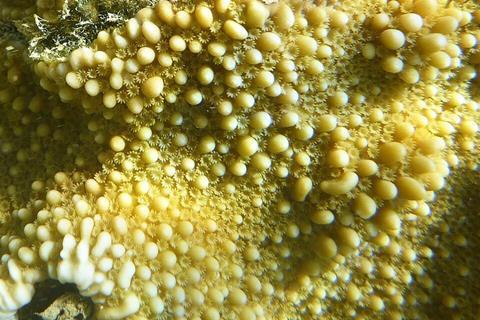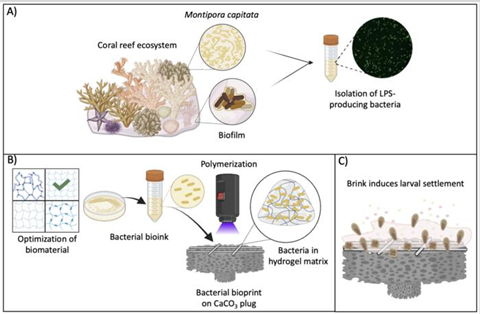A living ink containing bacteria attracts coral larvae and could help rebuild reefs. Corals are struggling with water pollution, as well as warming and acidification caused by climate change.

One way to support coral reef persistence is to encourage coral recruitment onto the reef. Coral larvae are free-swimming animals that eventually settle onto a surface and transform into a polyp with a hard, durable body.
READ MORE: Scientists develop an ink that boosts coral reef settlement by 20 times
Certain bacteria secrete chemical cues that stimulate settlement and metamorphosis. Settled polyps may then reproduce asexually, expanding the size of the reef.
Daniel Wangpraseurt and colleagues created a living material that encourages coral larvae to attach and settle down. Bacterial Reef Ink (BRINK) is a photopolymerized hydrogel hosting two native Hawaiian settlement-inducing bacterial strains, Cellulophaga lytica and Thalassotalea euphylliae.

In test tanks, coral settlement on surfaces coated with BRINK was fivefold higher than on surfaces without ink for one coral species and fourfold higher for a different coral species. According to the authors, the ink could be customized to support a range of settlement-inducing bacteria tailored to specific coral reef environments worldwide.







No comments yet